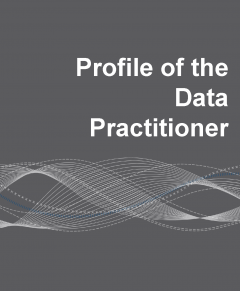Research in the sciences is currently undergoing a massive transformation, as technological advancements shift big data into the forefront of investigative tools, and early education is looking for solutions to keep up. The Ocean Tracks program offers a structured learning tool that supports both students and teachers in tackling big data in the classroom.
By rKochevar on March 05, 2018
The company Strava was in the news recently for its ability to display highly accurate maps using position data from personal fitness devices (e.g., Fitbit, Apple Watch, etc.). Not only are GPS fitness devices tracking a person’s mileage on land, many also track water activities, such as swimming, to within a few meters.
By rKochevar on February 13, 2018
I’ve spent a lot of time recently thinking about how we can better teach science using data. I believe that 21st Century science is increasingly data-intensive, and that in order to teach science as it is actually being practiced, it should be possible to identify datasets and data stories relevant to most, if not all, topics in modern science to use in the classroom.
The documents included in Tools for Building a Big Data Career Path can assist schools looking to design and implement career pathways in big data. These tools have been used by community colleges involved in the NSF-ATE funded Creating Pathways for Big Data Careers (DUE-1501927). They consist of:
1. Building Blocks for a Big Data Career Pathway
This template can be used to present the programs, courses, supporting activities, school and employer linkages that comprise a school’s proposed pathway.
By Guest Blogger on July 06, 2017
A scientist, a teacher, and a data analyst walk into a room…
By lnordstrom on May 18, 2017
ODI is the sum of many parts. Composed of 18 projects (5 actively funded) and about 25 staff, there are a lot of moving pieces to ODI. At any given time—in addition to the regular day-to-day work of moving 5 NSF-funded projects forward successfully—our staff is attending or presenting at conferences, meeting with partners and funders, and/or working on proposals for future work. As you might imagine, we are careful to prioritize our time.
By pmcdeed on March 15, 2017
It’s been a few months since I last contributed to the ODI blog, and boy, a lot has happened in my blogging hiatus! We had leaks, hacks, an election, and the Cubs finally won the World Series (though I’m still not convinced this last one isn’t “fake news”). Through it all, the ODI team has been hard at work making new connections and continuing our efforts to better prepare K-16 students with the data literacy skills required to navigate the aforementioned rapidly changing world. Unfortunately, I can’t take credit for any of the great work the ODI team has done these past few months.
By jmalyn-smith on December 12, 2016
 It is no longer news that the use of data-based decision making has reached a critical mass in every industry sector.
It is no longer news that the use of data-based decision making has reached a critical mass in every industry sector.
By kkrumhansl on December 07, 2016
I can feel the energy of the waves gently pushing at my body, the sound of bubbles rising by my ears. I look down at my underwater clipboard and carefully write down “5”; the number of kelp stems, or fronds, that I’ve just counted. I let my tethered pencil go, and it floats up in front of me as a fish swims by. Everything seems to move in slow motion around me. I am relaxed, but focused.
Pages